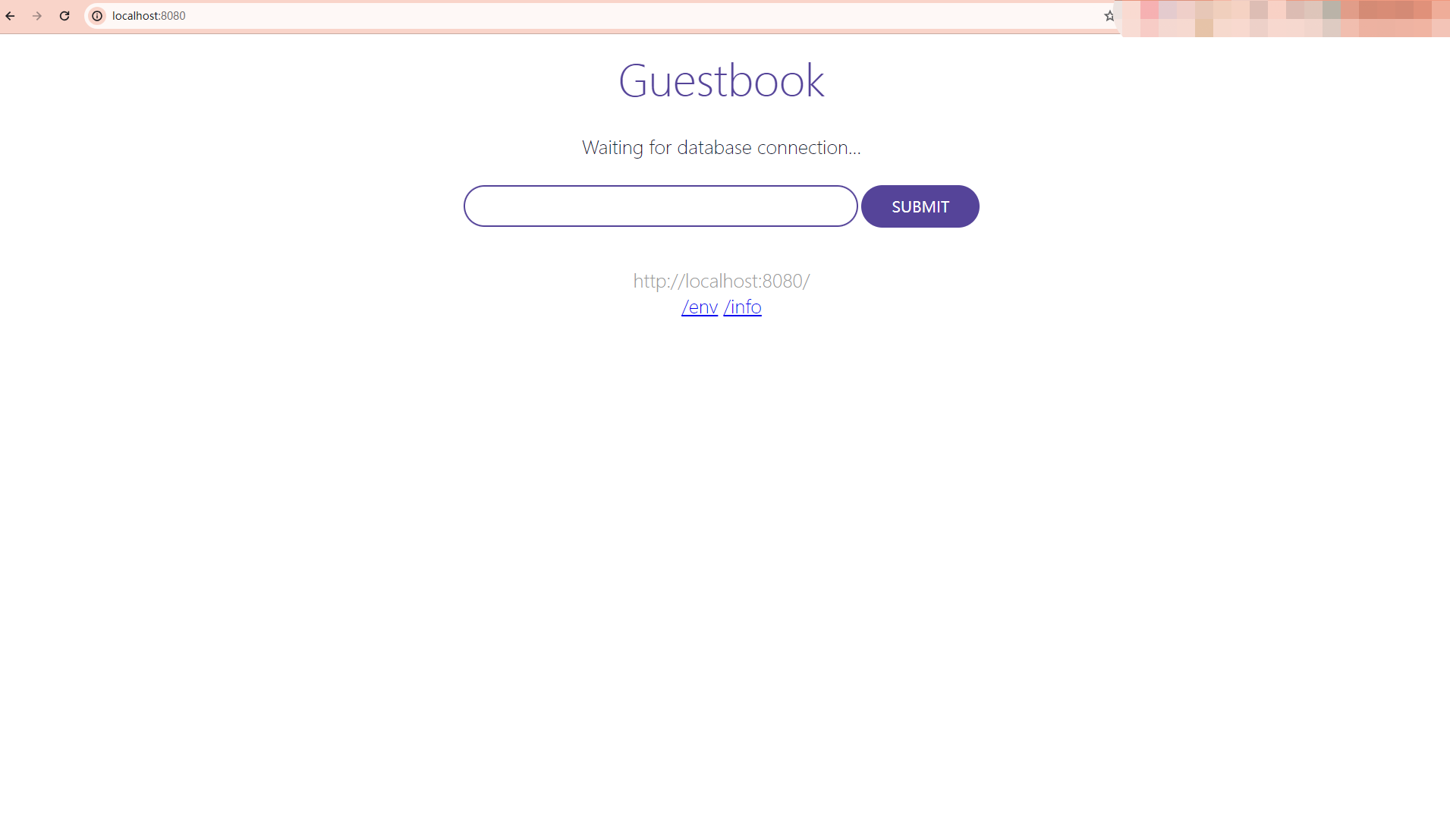CI/CD is realized based on pipeline and GitOps¶
This text introduces how to implement CI/CD based on pipeline and GitOps functions on the workbench.
Overall process¶
Prerequisites¶
Based on the overall process, we need to prepare the following information:
-
Prepare two code repositories on gitlab, one as a repository for business code and one as a repository for application configuration files (yaml). In this example, we place them in different directories within the same repository for convenience:
-
Prepare a Harbor mirror warehouse.
-
Prepare the pipeline credentials, named git-credentials, git-app-credentials, and harbor-credentials.
Create pipeline¶
This example includes the following steps: pull the service code, build an image, and update the application configuration file.
After the Update app profile step is successfully executed, Argo CD detects the change and updates to synchronize the latest configuration file and deploy it to the cluster.
-
For details about how to create a pipeline, see create pipeline.
-
After successful creation, select the pipeline operation: Edit Jenkinsfile
Click to view the pipeline Jenkinsfile example
pipeline { agent { node { label 'base' } } environment { SOURCE_REPO = '<https://github.com/amamba-io/amamba-examples.git>' SOURCE_CREDENTIAL_ID = '<source-credential-id>' DEPLOY_REPO = 'github.com/amamba-io/amamba-examples.git' DEPLOY_CREDENTIAL_ID = '<deploy-credential-id>' DEPLOY_PATH = 'plain-yaml' DOCKERFILE_ROOT = 'guestbook-go' DOCKER_REPO = 'docker.io/amambadev/guestbook' DOCKER_CREDENTIAL_ID = '<docker-credential-id>' } stages { stage('git clone') { steps { git(branch: 'main', credentialsId: "${SOURCE_CREDENTIAL_ID}", url: "${SOURCE_REPO}") script { env.COMMIT_ID = sh(script: 'git rev-parse --short=8 HEAD', returnStdout: true).trim() echo "commit id: ${COMMIT_ID}" } } } stage('build & push') { steps { container('base') { withCredentials([usernamePassword(passwordVariable:'PASS',usernameVariable:'USER',credentialsId:"${DOCKER_CREDENTIAL_ID}")]) { sh 'docker login ${DOCKER_REPO} -u $USER -p $PASS' sh 'docker build -f Dockerfile -t ${DOCKER_REPO}:${COMMIT_ID} ${DOCKERFILE_ROOT}' sh 'docker push ${DOCKER_REPO}:${COMMIT_ID}' } } } } stage('update manifest') { environment { DOCKER_TAG = "${COMMIT_ID}" } steps { container('base'){ dir('deploy') { git(branch: "main", url: "https://${DEPLOY_REPO}", credentialsId: "${DEPLOY_CREDENTIAL_ID}") sh 'yum install -y gettext' sh 'envsubst < pipelines/templates/guestbook-ui-deployment.yaml.tmpl > plain-yaml/guestbook-ui-deployment.yaml' withCredentials([usernamePassword(passwordVariable:'PASS', usernameVariable:'USER', credentialsId:"${DEPLOY_CREDENTIAL_ID}")]) { sh ''' git config user.name "robot" git config user.email "<robot@amamba.io>" git add . git commit -m "Bump image with ${DOCKER_REPO}:${DOCKER_TAG}" git push "https://${USER}:${PASS}@${DEPLOY_REPO}" ''' } } } } } } }
Continuous deployment based on Kustomize¶
If the deployment files are managed using Kustomize, we can update the step update manifest in the pipeline to accommodate this scenario:
environment {
...
DEPLOY_PATH = 'kustomize-guestbook/'
}
stages{
...
stage('update manifest') {
environment {
DOCKER_TAG = "${COMMIT_ID}"
}
steps {
container('base'){
dir('deploy') {
git(branch: "main", url: "https://${DEPLOY_REPO}", credentialsId: "${DEPLOY_CREDENTIAL_ID}")
sh '''
cd ${DEPLOY_PATH}
# install kustomize
curl -s "https://raw.githubusercontent.com/kubernetes-sigs/kustomize/master/hack/install_kustomize.sh" | bash
./kustomize edit set image ${DOCKER_REPO}:latest=${DOCKER_REPO}:${DOCKER_TAG}
'''
withCredentials([usernamePassword(passwordVariable:'PASS', usernameVariable:'USER', credentialsId:"${DEPLOY_CREDENTIAL_ID}")]) {
sh '''
git config user.name "robot"
git config user.email "robot@amamba.io"
git add .
git commit -m "Bump image with ${DOCKER_REPO}:${DOCKER_TAG}"
git push "https://${USER}:${PASS}@${DEPLOY_REPO}"
'''
}
}
}
}
}
}
Continuous deployment based on Helm¶
If the deployment files are managed using Helm Charts, we can update the update manifest step in the pipeline to accommodate this scenario:
environment {
...
DEPLOY_PATH = 'helm-guestbook/values-production.yaml'
}
stages{
...
stage('update manifest') {
environment {
DOCKER_TAG = "${COMMIT_ID}"
}
steps {
container('base'){
dir('deploy') {
git(branch: "main", url: "https://${DEPLOY_REPO}", credentialsId: "${DEPLOY_CREDENTIAL_ID}")
sh '''
yum install -y yq
yq -i ".image.tag=${DOCKER_TAG}" ${DEPLOY_PATH}
'''
withCredentials([usernamePassword(passwordVariable:'PASS', usernameVariable:'USER', credentialsId:"${DEPLOY_CREDENTIAL_ID}")]) {
sh '''
git config user.name "robot"
git config user.email "robot@amamba.io"
git add .
git commit -m "Bump image with ${DOCKER_REPO}:${DOCKER_TAG}"
git push "https://${USER}:${PASS}@${DEPLOY_REPO}"
'''
}
}
}
}
}
}
Create continuous deployment applications¶
-
Import argocd-examples repository in Http mode, refer to steps.
-
Create a continuously deployed application
-
After the creation is complete, a record is generated, and the synchronization status is displayed Not synced
-
Click Synchronize to complete application deployment
Run pipeline to trigger CI/CD¶
-
Select the pipeline created above and click Run Now
-
Viewing Run Logs
-
After the pipeline runs successfully, verify that the image is uploaded to Harbor and the tag defined in Jenkinsfile is v2.0. At the same time, contents in the deployment repositories have been renewed.
-
Continue to verify the continuous deployment application and find that the status is Not synced . At this moment, deployment resources are not synchronized yet.
-
Click Sync , after the synchronization, view Deployment resources and confirm the current image version.
-
Use
port-forwardto mirror a local port to the guestbook-ui service and access it locally:
Others¶
Based on the above process, you can also use Argo Rollouts to replace Deployment for implementing canary releases and blue-green deployments. We provide examples in the sample code that can be used as a reference for Pipeline - GitOps - Canary/Blue-Green Deployment:
- Canary Deployment Based on Replicas and Pipeline
- Canary Deployment Based on Istio and Pipeline
- Blue-Green Deployment and Pipeline